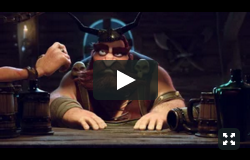---
The Dark Knight: A Masterpiece of Heroism and Chaos
Introduction
Christopher Nolan’s The Dark Knight (2008) is widely regarded as one of the greatest superhero movies ever made. It redefined the genre by blending action, psychological depth, and philosophical dilemmas. Featuring an unforgettable performance by Heath Ledger as the Joker, the film explores the nature of good and evil, moral ambiguity, and the cost of heroism.
Plot Summary
The story picks up after Batman Begins, with Bruce Wayne (Christian Bale) firmly established as Gotham’s vigilante. With the help of Commissioner Gordon (Gary Oldman) and District Attorney Harvey Dent (Aaron Eckhart), Batman wages a war against Gotham’s criminal underworld.
However, their efforts are disrupted by the rise of the Joker (Heath Ledger), a psychopathic mastermind who thrives on chaos. Unlike traditional villains, the Joker isn’t motivated by power or money—he simply wants to see the world burn. His reign of terror forces Batman into a moral dilemma, challenging his no-kill rule and testing the limits of his ideology.
As the Joker manipulates Gotham, he also corrupts Harvey Dent, turning him into the vengeful Two-Face. The film ends with a tragic yet noble act: Batman takes the fall for Harvey’s crimes to preserve his legacy as Gotham’s White Knight, setting up the events for The Dark Knight Rises.
Themes and Analysis
1. Chaos vs. Order
The central conflict of the film is not just Batman vs. Joker—it’s order vs. chaos. The Joker represents anarchy, believing that laws and morals are meaningless in a world ruled by chaos. Batman, on the other hand, stands for justice, trying to maintain order even when it comes at great personal cost.
2. The Nature of Heroism
Batman struggles with his role as a hero. Unlike traditional superheroes, he doesn’t seek admiration—he is willing to be hated if it means protecting Gotham. His decision to take the blame for Two-Face’s crimes exemplifies his selflessness, making him more than just a crimefighter but a true symbol of sacrifice.
3. The Corruptibility of Man
Harvey Dent’s transformation into Two-Face is a tragic example of how even the best people can fall. The Joker’s goal is not just to kill but to break Gotham’s moral champions. By corrupting Dent, he proves his point—that anyone can be pushed to evil under the right circumstances.
4. Moral Dilemmas
The film presents several ethical dilemmas, such as the two ferry boats forced to choose between self-preservation and morality. This moment encapsulates the movie’s core question: Are people fundamentally good or bad? The passengers’ decision to reject the Joker’s game proves that hope still exists.
Impact and Reception
The Dark Knight was a massive success, earning over $1 billion at the box office. It redefined comic book movies, proving they could be both commercially and critically successful. Heath Ledger’s Joker became legendary, earning him a posthumous Academy Award for Best Supporting Actor.
Conclusion
With its compelling story, philosophical depth, and iconic performances, The Dark Knight remains one of the greatest films ever made. It is more than just a superhero movie—it is a cinematic masterpiece that continues to inspire debates and admiration.
---




0 comments:
Post a Comment